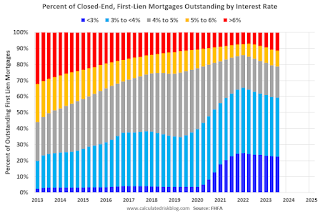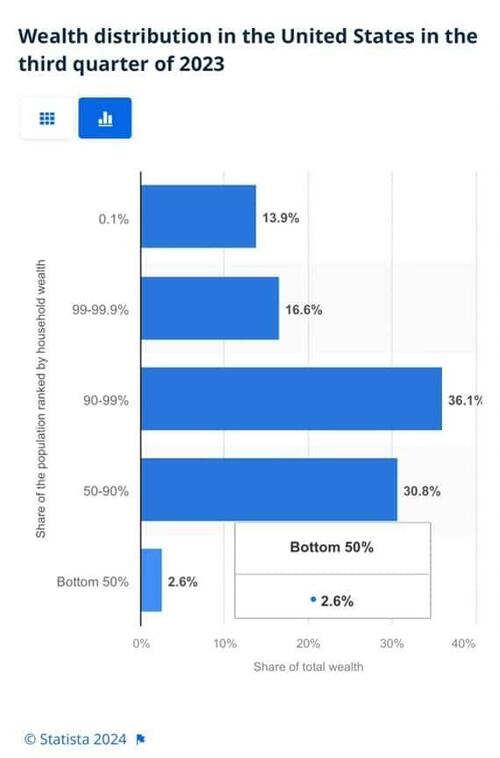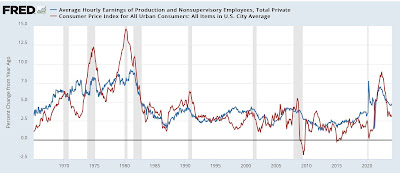Uncategorized
Global Hearing Aid Market Report 2022 to 2028: Featuring Cochlear, Starkey, Nurotron Biotechnology and MED-EL Among Others
Global Hearing Aid Market Report 2022 to 2028: Featuring Cochlear, Starkey, Nurotron Biotechnology and MED-EL Among Others
PR Newswire
DUBLIN, Jan. 22, 2023
DUBLIN, Jan. 22, 2023 /PRNewswire/ — The “Global Hearing Aid Market By Product ,By Type of…
Global Hearing Aid Market Report 2022 to 2028: Featuring Cochlear, Starkey, Nurotron Biotechnology and MED-EL Among Others
PR Newswire
DUBLIN, Jan. 22, 2023
DUBLIN, Jan. 22, 2023 /PRNewswire/ -- The "Global Hearing Aid Market By Product ,By Type of Hearing Loss, By Patient Type & By Region- Forecast and Analysis 2022-2028" report has been added to ResearchAndMarkets.com's offering.
The global hearing aid market size was valued at USD 9.71 Billion in 2021, and it is expected to reach a value of USD 16.53 Billion by 2028, at a CAGR of 7.90% over the forecast period (2022 - 2028).
Companies Mentioned
- Sonova Group (Switzerland)
- Demant A/S (Denmark)
- GN Store Nord A/S (Denmark)
- Cochlear Ltd. (Australia)
- Starkey (US)
- Nurotron Biotechnology Co., Ltd. (China)
- MED-EL (Austria)
- Audina Hearing Instruments, Inc. (US)
- Horentek (Italy)
- ZOUNDS Hearing Inc. (US)
A hearing aid is an electrical device that amplifies sound to provide clear sound to the user. People with hearing loss or disabilities are the most likely to use these.
Hearing aids are becoming more popular as a result of technological advancements and a growing desire for visually appealing designs. While technical developments and pricing pressures are expected to have an impact on the market, significant growth is anticipated throughout the analysis period.
Wireless devices, Bluetooth, and the constant introduction of new appealing designs are the primary market drivers. A growing aging population, improved diagnosis, and increased awareness are also driving the industry.
Segments covered in this report
The Global Hearing Aid Market is segmented based on Product ,Type of Hearing Loss, Patient Type. Based on Type it is categorized into Product Hearing Aid Devices (Receiver-in-the-ear Hearing Aids, Behind-the-ear Hearing Aids, Canal Hearing Aids, In-the-ear Hearing Aids,, Other Hearing Aid Devices), Hearing Implants (Cochlear Implants, Bone-anchored Systems).
Based on Type it is categorized into Sensorineural Hearing Loss, Conductive Hearing Loss. Based on Type it is categorized into Adults, Pediatrics.
Driver
The increasing prevalence of hearing loss among the population is a key factor driving the industry's growth. Hearing loss is becoming more common around the world, emphasizing the importance of monitoring and assessing hearing functions. Untreated hearing loss has a significant impact on children's language development, learning, and social involvement.
Similarly, older people with hearing loss struggle to keep up with daily conversations. Untreated hearing loss has been linked to a number of physical and psychological issues in retirees, including cognitive decline and depression, as well as an increased risk of trips and falls.
Restraint
The high cost of hearing aids such as cochlear implants and bone-anchored devices is a significant barrier to market growth, particularly in price-sensitive regions such as Asia Pacific, Latin America, and Africa.
Healthcare providers, particularly those in developing countries such as Brazil and Mexico, have limited financial resources to invest in cutting-edge technology.
Employees must also receive extensive training in the proper use and maintenance of cochlear implants and bone-anchored systems. Extensive research and development are required to create technologically advanced hearing aids. As a result, both the manufacturing cost and the final price for customers rise significantly.
Market Trend
Increased global adoption of tele-audiology is one of the key trends in the global hearing aid market. The COVID-19 outbreak has hastened the adoption of telehealth among audiologists. To avoid patient traffic, many healthcare practitioners are turning to tele-audiology.
Hearing Review polled healthcare workers in the United States and Canada about how the COVID-19 outbreak has affected their work. According to the poll, 51% of healthcare providers use tele-audiology for follow-ups and counseling, and 45% use it for device changes and fine-tuning. As a result, manufacturers are developing a number of platforms to help patients and healthcare providers.
For more information about this report visit https://www.researchandmarkets.com/r/2pkfb6
About ResearchAndMarkets.com
ResearchAndMarkets.com is the world's leading source for international market research reports and market data. We provide you with the latest data on international and regional markets, key industries, the top companies, new products and the latest trends.
Media Contact:
Research and Markets
Laura Wood, Senior Manager
press@researchandmarkets.com
For E.S.T Office Hours Call +1-917-300-0470
For U.S./CAN Toll Free Call +1-800-526-8630
For GMT Office Hours Call +353-1-416-8900
U.S. Fax: 646-607-1907
Fax (outside U.S.): +353-1-481-1716
Logo- https://mma.prnewswire.com/media/539438/Research_and_Markets_Logo.jpg
View original content:https://www.prnewswire.com/news-releases/global-hearing-aid-market-report-2022-to-2028-featuring-cochlear-starkey-nurotron-biotechnology-and-med-el-among-others-301726830.html
SOURCE Research and Markets
Uncategorized
Q4 Update: Delinquencies, Foreclosures and REO
Today, in the Calculated Risk Real Estate Newsletter: Q4 Update: Delinquencies, Foreclosures and REO
A brief excerpt: I’ve argued repeatedly that we would NOT see a surge in foreclosures that would significantly impact house prices (as happened followi…

A brief excerpt:
I’ve argued repeatedly that we would NOT see a surge in foreclosures that would significantly impact house prices (as happened following the housing bubble). The two key reasons are mortgage lending has been solid, and most homeowners have substantial equity in their homes..There is much more in the article. You can subscribe at https://calculatedrisk.substack.com/ mortgage rates real estate mortgages pandemic interest rates
...
And on mortgage rates, here is some data from the FHFA’s National Mortgage Database showing the distribution of interest rates on closed-end, fixed-rate 1-4 family mortgages outstanding at the end of each quarter since Q1 2013 through Q3 2023 (Q4 2023 data will be released in a two weeks).
This shows the surge in the percent of loans under 3%, and also under 4%, starting in early 2020 as mortgage rates declined sharply during the pandemic. Currently 22.6% of loans are under 3%, 59.4% are under 4%, and 78.7% are under 5%.
With substantial equity, and low mortgage rates (mostly at a fixed rates), few homeowners will have financial difficulties.
Uncategorized
‘Bougie Broke’ – The Financial Reality Behind The Facade
‘Bougie Broke’ – The Financial Reality Behind The Facade
Authored by Michael Lebowitz via RealInvestmentAdvice.com,
Social media users claiming…

Authored by Michael Lebowitz via RealInvestmentAdvice.com,
Social media users claiming to be Bougie Broke share pictures of their fancy cars, high-fashion clothing, and selfies in exotic locations and expensive restaurants. Yet they complain about living paycheck to paycheck and lacking the means to support their lifestyle.
Bougie broke is like “keeping up with the Joneses,” spending beyond one’s means to impress others.
Bougie Broke gives us a glimpse into the financial condition of a growing number of consumers. Since personal consumption represents about two-thirds of economic activity, it’s worth diving into the Bougie Broke fad to appreciate if a large subset of the population can continue to consume at current rates.
The Wealth Divide Disclaimer
Forecasting personal consumption is always tricky, but it has become even more challenging in the post-pandemic era. To appreciate why we share a joke told by Mike Green.
Bill Gates and I walk into the bar…
Bartender: “Wow… a couple of billionaires on average!”
Bill Gates, Jeff Bezos, Elon Musk, Mark Zuckerberg, and other billionaires make us all much richer, on average. Unfortunately, we can’t use the average to pay our bills.
According to Wikipedia, Bill Gates is one of 756 billionaires living in the United States. Many of these billionaires became much wealthier due to the pandemic as their investment fortunes proliferated.
To appreciate the wealth divide, consider the graph below courtesy of Statista. 1% of the U.S. population holds 30% of the wealth. The wealthiest 10% of households have two-thirds of the wealth. The bottom half of the population accounts for less than 3% of the wealth.
The uber-wealthy grossly distorts consumption and savings data. And, with the sharp increase in their wealth over the past few years, the consumption and savings data are more distorted.
Furthermore, and critical to appreciate, the spending by the wealthy doesn’t fluctuate with the economy. Therefore, the spending of the lower wealth classes drives marginal changes in consumption. As such, the condition of the not-so-wealthy is most important for forecasting changes in consumption.
Revenge Spending
Deciphering personal data has also become more difficult because our spending habits have changed due to the pandemic.
A great example is revenge spending. Per the New York Times:
Ola Majekodunmi, the founder of All Things Money, a finance site for young adults, explained revenge spending as expenditures meant to make up for “lost time” after an event like the pandemic.
So, between the growing wealth divide and irregular spending habits, let’s quantify personal savings, debt usage, and real wages to appreciate better if Bougie Broke is a mass movement or a silly meme.
The Means To Consume
Savings, debt, and wages are the three primary sources that give consumers the ability to consume.
Savings
The graph below shows the rollercoaster on which personal savings have been since the pandemic. The savings rate is hovering at the lowest rate since those seen before the 2008 recession. The total amount of personal savings is back to 2017 levels. But, on an inflation-adjusted basis, it’s at 10-year lows. On average, most consumers are drawing down their savings or less. Given that wages are increasing and unemployment is historically low, they must be consuming more.
Now, strip out the savings of the uber-wealthy, and it’s probable that the amount of personal savings for much of the population is negligible. A survey by Payroll.org estimates that 78% of Americans live paycheck to paycheck.
More on Insufficient Savings
The Fed’s latest, albeit old, Report on the Economic Well-Being of U.S. Households from June 2023 claims that over a third of households do not have enough savings to cover an unexpected $400 expense. We venture to guess that number has grown since then. To wit, the number of households with essentially no savings rose 5% from their prior report a year earlier.
Relatively small, unexpected expenses, such as a car repair or a modest medical bill, can be a hardship for many families. When faced with a hypothetical expense of $400, 63 percent of all adults in 2022 said they would have covered it exclusively using cash, savings, or a credit card paid off at the next statement (referred to, altogether, as “cash or its equivalent”). The remainder said they would have paid by borrowing or selling something or said they would not have been able to cover the expense.
Debt
After periods where consumers drained their existing savings and/or devoted less of their paychecks to savings, they either slowed their consumption patterns or borrowed to keep them up. Currently, it seems like many are choosing the latter option. Consumer borrowing is accelerating at a quicker pace than it was before the pandemic.
The first graph below shows outstanding credit card debt fell during the pandemic as the economy cratered. However, after multiple stimulus checks and broad-based economic recovery, consumer confidence rose, and with it, credit card balances surged.
The current trend is steeper than the pre-pandemic trend. Some may be a catch-up, but the current rate is unsustainable. Consequently, borrowing will likely slow down to its pre-pandemic trend or even below it as consumers deal with higher credit card balances and 20+% interest rates on the debt.
The second graph shows that since 2022, credit card balances have grown faster than our incomes. Like the first graph, the credit usage versus income trend is unsustainable, especially with current interest rates.
With many consumers maxing out their credit cards, is it any wonder buy-now-pay-later loans (BNPL) are increasing rapidly?
Insider Intelligence believes that 79 million Americans, or a quarter of those over 18 years old, use BNPL. Lending Tree claims that “nearly 1 in 3 consumers (31%) say they’re at least considering using a buy now, pay later (BNPL) loan this month.”More telling, according to their survey, only 52% of those asked are confident they can pay off their BNPL loan without missing a payment!
Wage Growth
Wages have been growing above trend since the pandemic. Since 2022, the average annual growth in compensation has been 6.28%. Higher incomes support more consumption, but higher prices reduce the amount of goods or services one can buy. Over the same period, real compensation has grown by less than half a percent annually. The average real compensation growth was 2.30% during the three years before the pandemic.
In other words, compensation is just keeping up with inflation instead of outpacing it and providing consumers with the ability to consume, save, or pay down debt.
It’s All About Employment
The unemployment rate is 3.9%, up slightly from recent lows but still among the lowest rates in the last seventy-five years.
The uptick in credit card usage, decline in savings, and the savings rate argue that consumers are slowly running out of room to keep consuming at their current pace.
However, the most significant means by which we consume is income. If the unemployment rate stays low, consumption may moderate. But, if the recent uptick in unemployment continues, a recession is extremely likely, as we have seen every time it turned higher.
It’s not just those losing jobs that consume less. Of greater impact is a loss of confidence by those employed when they see friends or neighbors being laid off.
Accordingly, the labor market is probably the most important leading indicator of consumption and of the ability of the Bougie Broke to continue to be Bougie instead of flat-out broke!
Summary
There are always consumers living above their means. This is often harmless until their means decline or disappear. The Bougie Broke meme and the ability social media gives consumers to flaunt their “wealth” is a new medium for an age-old message.
Diving into the data, it argues that consumption will likely slow in the coming months. Such would allow some consumers to save and whittle down their debt. That situation would be healthy and unlikely to cause a recession.
The potential for the unemployment rate to continue higher is of much greater concern. The combination of a higher unemployment rate and strapped consumers could accentuate a recession.
Uncategorized
The most potent labor market indicator of all is still strongly positive
– by New Deal democratOn Monday I examined some series from last Friday’s Household survey in the jobs report, highlighting that they more frequently…

- by New Deal democrat
On Monday I examined some series from last Friday’s Household survey in the jobs report, highlighting that they more frequently than not indicated a recession was near or underway. But I concluded by noting that this survey has historically been noisy, and I thought it would be resolved away this time. Specifically, there was strong contrary data from the Establishment survey, backed up by yesterday’s inflation report, to the contrary. Today I’ll examine that, looking at two other series.
-

 Uncategorized3 weeks ago
Uncategorized3 weeks agoAll Of The Elements Are In Place For An Economic Crisis Of Staggering Proportions
-

 International5 days ago
International5 days agoEyePoint poaches medical chief from Apellis; Sandoz CFO, longtime BioNTech exec to retire
-

 Uncategorized4 weeks ago
Uncategorized4 weeks agoCalifornia Counties Could Be Forced To Pay $300 Million To Cover COVID-Era Program
-

 Uncategorized3 weeks ago
Uncategorized3 weeks agoApparel Retailer Express Moving Toward Bankruptcy
-

 Uncategorized4 weeks ago
Uncategorized4 weeks agoIndustrial Production Decreased 0.1% in January
-

 International5 days ago
International5 days agoWalmart launches clever answer to Target’s new membership program
-

 Uncategorized4 weeks ago
Uncategorized4 weeks agoRFK Jr: The Wuhan Cover-Up & The Rise Of The Biowarfare-Industrial Complex
-

 Uncategorized3 weeks ago
Uncategorized3 weeks agoGOP Efforts To Shore Up Election Security In Swing States Face Challenges



























